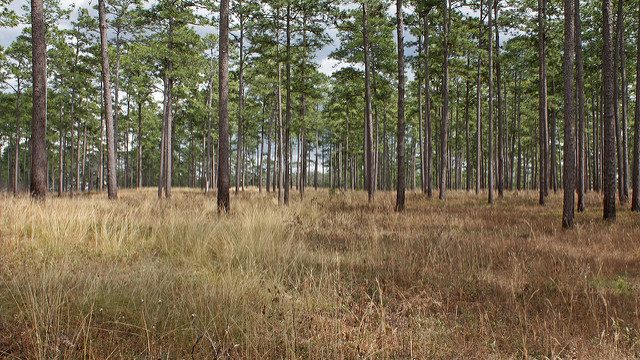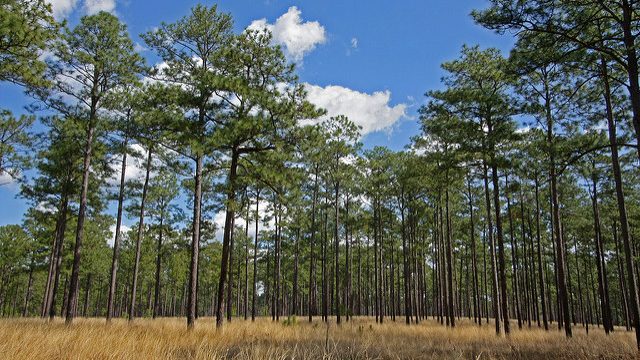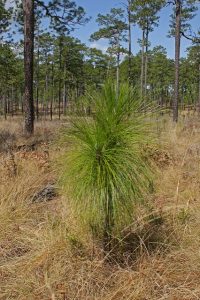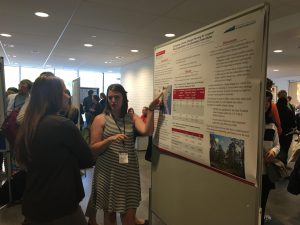Incorporating Change into Conservation Planning

The following post was written by Kalysha Clark, Master’s student in Fisheries, Wildlife and Conservation Biology, Department of Forestry & Environmental Resources, NC State University

The southeastern United States is experiencing high rates of population growth, urbanization, and land use change. When coupled with changes in climate in the Southeast, impacts on threatened species, wildlife communities, and habitats are expected to increase into the future. How do we conserve and manage these important natural resources in the face of changing conditions? Several Southeast CSC researchers are gathering data to find out how different resource managers in the Southeast are approaching this question.
State and federal agencies, as well as some non-governmental organizations and landowners, develop plans that set out goals and actions to manage a particular species or habitat, for specific objectives such as protecting species at risk. One aspect of the SE CSC project Vital Futures: Conservation Adaptation Planning for Landscape and Climate Change focuses on understanding how management plans for longleaf pine (Pinus palustris) in the Southeast incorporate climate change. NCSU graduate student Kalysha Clark had the opportunity to present some of their research results at the International Symposium on Society and Resource Management in Umeå, Sweden this summer.
The Vital Futures project, led by Nils Peterson, NCSU, Kirstin Dow, University of South Carolina, and Bruce Stein, National Wildlife Federation, supports the development of a Southeast Conservation Adaptation Strategy (SECAS) by assessing the implications of climate change and other drivers of landscape change for existing conservation goals and management objectives. SECAS pulls together federal, state, non-profit, and private organizations to collaborate in designing and achieving a connected network of landscapes and seascapes that support thriving fish and wildlife population and improved quality of life for people across the southeastern U.S. and the Caribbean.

The Research
Longleaf pine has been reduced to 3-5% of its original range, but may be particularly resilient to conditions associated with climate change including drought, severe storms, and increased prevalence of pests. Despite the critical role of longleaf in supporting climate-resilient ecosystems, little is known about how landscape managers in the region have considered climate change in planning efforts. Peterson and his team collected longleaf pine management plans from the Southeast and used a mixed methods document analysis to identify how plans addressed climate change threats on longleaf pine, considered climate change in identification of longleaf pine ecosystems, and linked climate change to planned conservation actions for longleaf ecosystem.
Main Conclusions:
• Newer plans and plans from state agencies tended to include greater consideration of climate change than older plans, federal plans, and those developed by nongovernmental organizations or Joint Venture partnerships.
• State wildlife action plans and forest action plans tended to score higher than other types of plans, such as plans from the Department of Defense, U.S. Forest Service, and nongovernmental organizations.
The conclusions from this research provide valuable insights as to how resource management plans may be revised to include conservation in the face of climate change. Conserving longleaf pine ecosystems also presents a great opportunity for resource managers in the Southeast to conserve wildlife species vulnerable to climate change impacts and promote the sustainable management of forests.

The Conference
The International Symposium on Society and Resource Management (ISSRM) is an annual conference hosted by the International Association for Society and Natural Resources. The symposium is a venue for presenting cutting-edge research and engaging in productive discussions focused on the sustainable management of natural resources. The 2017 ISSRM was held in Umeå, Sweden. Kalysha presented her research during the symposium’s poster session where she received feedback from other graduate students, university professors and natural resource professionals. One audience member in particular was surprised to learn how little historic longleaf remains in the southeastern United States. Another international audience member was interested in learning more about how federal and state governments manage land in the United States. Overall, the international natural resource community was interested in the research and how it could be used to inform future natural resource planning.
“It was really great having the opportunity to share our research and discuss climate change in regards to natural resource planning and management, specifically forestry management,” Kalysha said. “Other conference attendees were interested in learning about how integration of climate change into management plans is improving, despite climate change being such a politically charged topic in the United States.”
Learn more about these projects:
Vital Futures: Conservation Adaptation Planning for Landscape and Climate Change in the Southeast
Southeast Conservation Adaptation Strategy
- Categories: